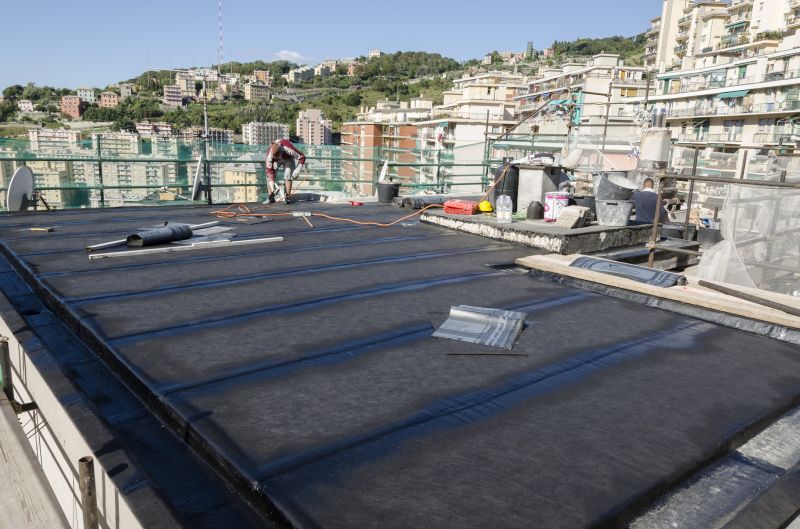Favorite Roofing Service Gear for Professional Results
Select trusted tools and accessories that help roofing experts achieve superior quality and safety standards.
 In the realm of roofing services, having the right products is essential for ensuring quality work and long-lasting results. From durable tools to specialized materials, a comprehensive selection of equipment can help roofing professionals and DIY enthusiasts alike tackle projects efficiently and safely. Whether repairing a small leak or installing an entire roof, understanding the variety of available products can aid in making informed decisions tailored to specific needs.
In the realm of roofing services, having the right products is essential for ensuring quality work and long-lasting results. From durable tools to specialized materials, a comprehensive selection of equipment can help roofing professionals and DIY enthusiasts alike tackle projects efficiently and safely. Whether repairing a small leak or installing an entire roof, understanding the variety of available products can aid in making informed decisions tailored to specific needs.
Top Overall Option
Roofing Safety and Installation Kit
A comprehensive roofing safety and installation kit provides a curated selection of essential tools and protective gear designed for roofing projects. It typically includes safety harnesses, roofing nail guns, gloves, roofing nails, and weather-resistant materials, offering a versatile solution for both professionals and DIY enthusiasts. This all-in-one approach helps streamline project setup, improve safety compliance, and ensure that key tools are readily available for various tasks.
Types of Products For Roofing Service
Roofing Nails and Fasteners
Various nails and fasteners designed for securing shingles, metal panels, and underlayment materials to ensure a secure fit.
Roofing Underlayment and Weather Barriers
Materials used beneath roofing surfaces to provide additional protection against moisture and weather elements.
Roofing Sealants and Adhesives
Specialized compounds for sealing joints, flashing, and repairs to prevent water intrusion.
Roofing Safety Harnesses and Fall Protection Equipment
Gear designed to keep workers safe when working at heights, including harnesses, lanyards, and anchors.
Roofing Power Tools
Electric and pneumatic tools such as nail guns, drills, and cutting devices that facilitate efficient installation and repairs.
Roofing Inspection Tools
Devices like moisture meters and infrared thermometers used to assess roof condition and detect issues.
Roofing Cleaning Tools
Equipment such as roof brushes, scrapers, and pressure washers for surface maintenance.
Roofing Flashing and Metal Components
Metal pieces used to redirect water around roof penetrations and edges.
Roof Ventilation Products
Vents and fans designed to promote airflow and prevent moisture buildup inside the attic space.
Roofing Insulation Materials
Insulation products used to improve energy efficiency and temperature regulation within the building structure.
Roofing Repair Kits
Complete sets containing patches, sealants, and tools for small-scale roof repairs.
Roofing Accessories and Fastening Systems
Additional components like clips, hooks, and specialized fasteners for various roofing applications.
Popular Choices
Harnesses designed for fall protection, offering adjustable straps and durable materials.
Electric or pneumatic nail guns that help speed up shingle or metal panel installation.
Heavy-duty rolls of weather-resistant underlayment for layered protection.
High-quality sealants suitable for sealing around flashing, vents, and repairs.
Compact cameras or drones used to inspect hard-to-reach areas of the roof.
Sturdy ladders designed specifically for roofing access and safety.
Protective gloves that provide grip and safety during handling of roofing materials.
Power fans used to improve attic airflow and ventilation.
Specialized snips and saws for cutting shingles, metal, and other roofing components.
Device for detecting moisture levels within roofing materials to assess damage or leaks.
Heavy-duty brushes for removing debris and moss from roof surfaces.
Metal flashing used around chimneys, vents, and edges to prevent water intrusion.
Rigid foam or fiberglass boards used for thermal insulation in roofing systems.
Pre-cut patches and repair kits for small leaks and surface damage.
Clips and connectors to secure roofing materials firmly in place.
Protective covers to prevent pests and debris from entering attic vents.
Hard hats designed for roofing work to protect against head injuries.
Roofing projects often require a combination of protective gear, fastening tools, and materials designed to withstand the elements. High-quality safety harnesses and fall protection equipment are crucial for worker safety, especially when working at heights. Roofing nails, screws, and fasteners come in numerous variations to suit different roofing materials and installation techniques. Additionally, specialized sealants and adhesives help create watertight seals and bond various roofing components effectively.
Proper surface preparation is vital, which involves the use of roofing underlayment, weather barriers, and cleaning tools. For more complex repairs or installations, tools like roofing nail guns, power drills, and cutting equipment ensure precision and efficiency. It's also important to consider products that facilitate inspection and maintenance, such as moisture meters and roof anchors. Selecting the right combination of these products can significantly impact the durability and safety of roofing projects.
Overall, a well-rounded toolkit and material inventory tailored to roofing services can streamline work processes, improve safety standards, and enhance the quality of the finished roof. Staying informed about the latest product innovations and adhering to best practices can help professionals and homeowners achieve successful outcomes in their roofing endeavors.
Key Buying Considerations
- Compatibility with existing roofing materials and systems.
- Durability and weather resistance of materials and tools.
- Safety features and compliance with relevant standards.
- Ease of use and ergonomic design for prolonged work.
- Availability of replacement parts and accessories.
- Weight and portability of tools for ease of handling.
- Supplier reputation and product reviews.
- Warranty coverage and customer support.
- Cost-effectiveness over the lifespan of the product.
- Compatibility with other tools and equipment in your toolkit.
- Specific project requirements, such as roof pitch or material type.
- Environmental conditions typical for your location, such as snow or wind loads.
- Ease of transportation and storage of larger equipment.
- Availability of training or instructional resources for new tools.
- Compliance with local building codes and safety regulations.
This page contains affiliate links. We may earn a commission if you make a purchase through these links, which helps support our content creation efforts.
